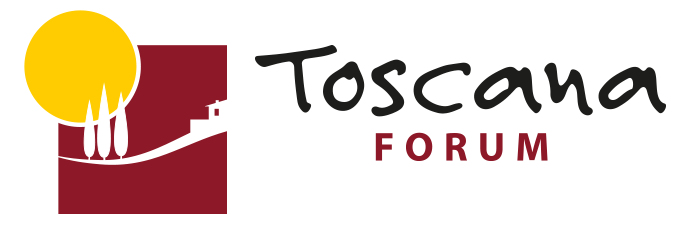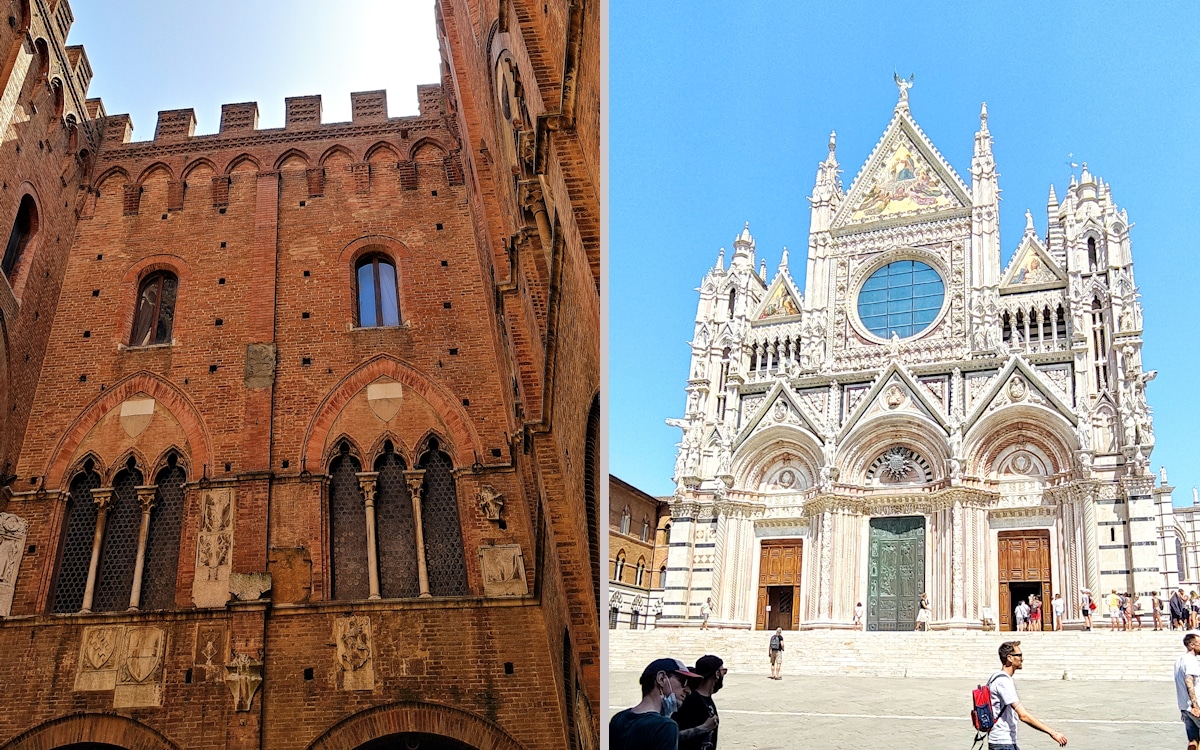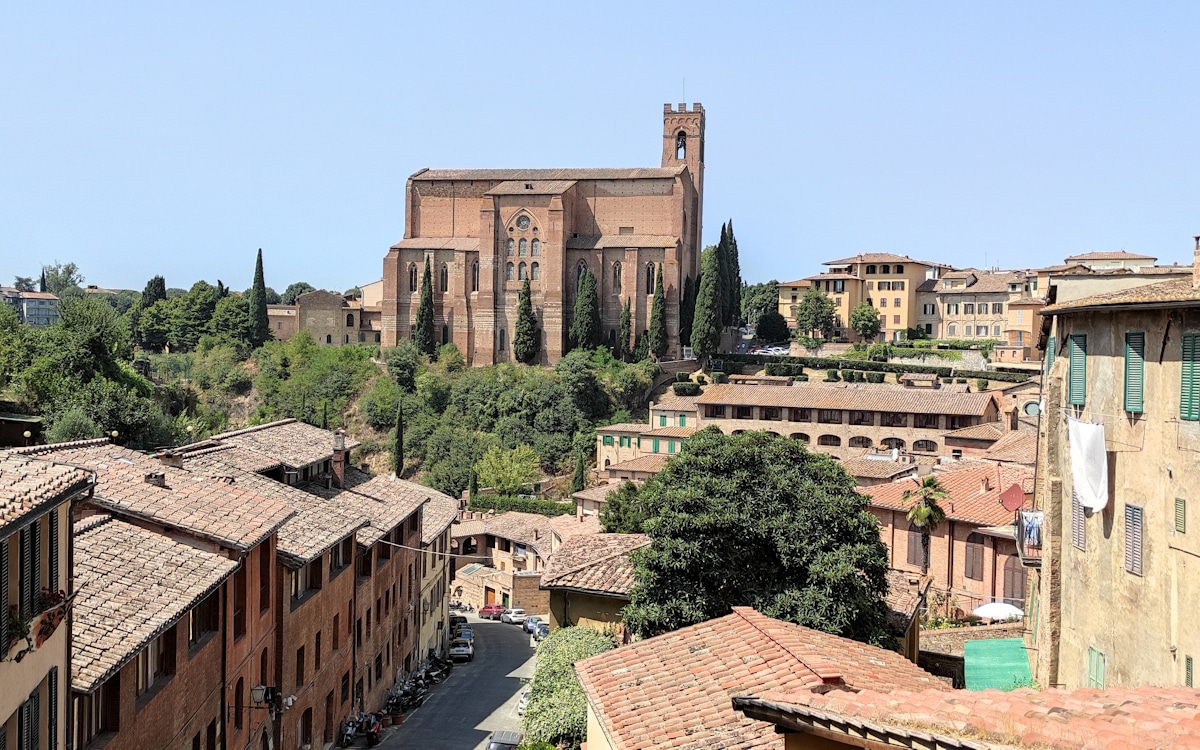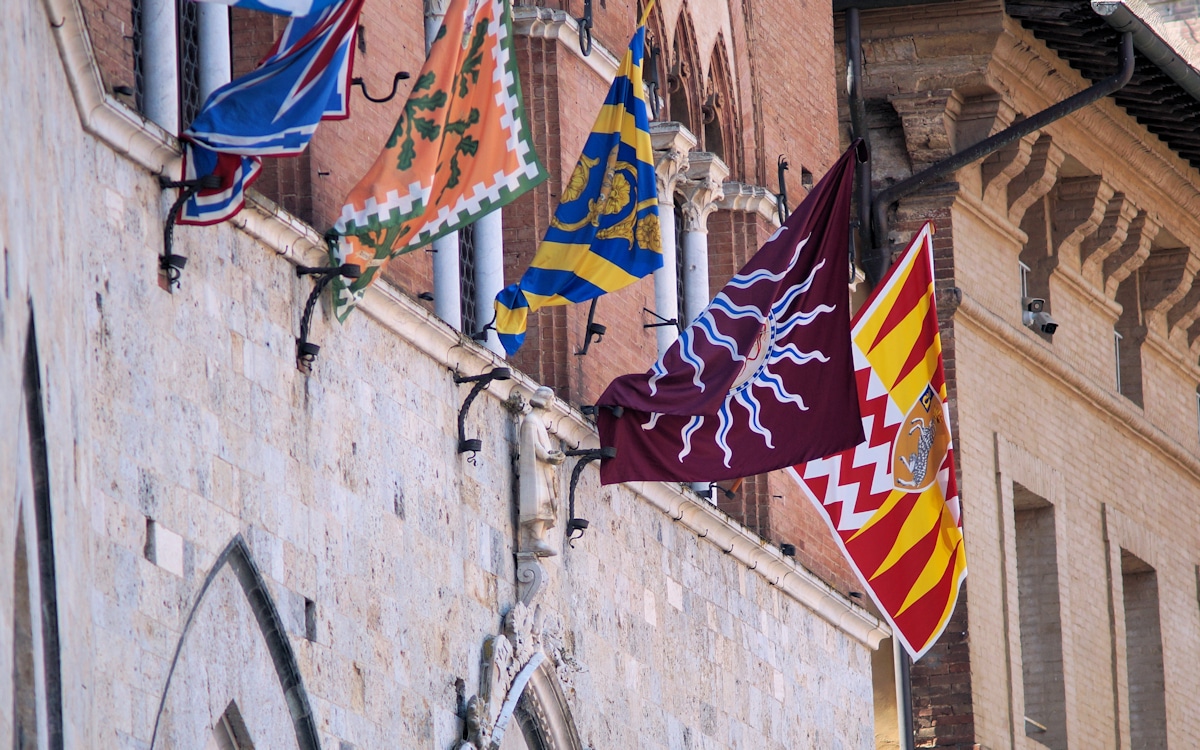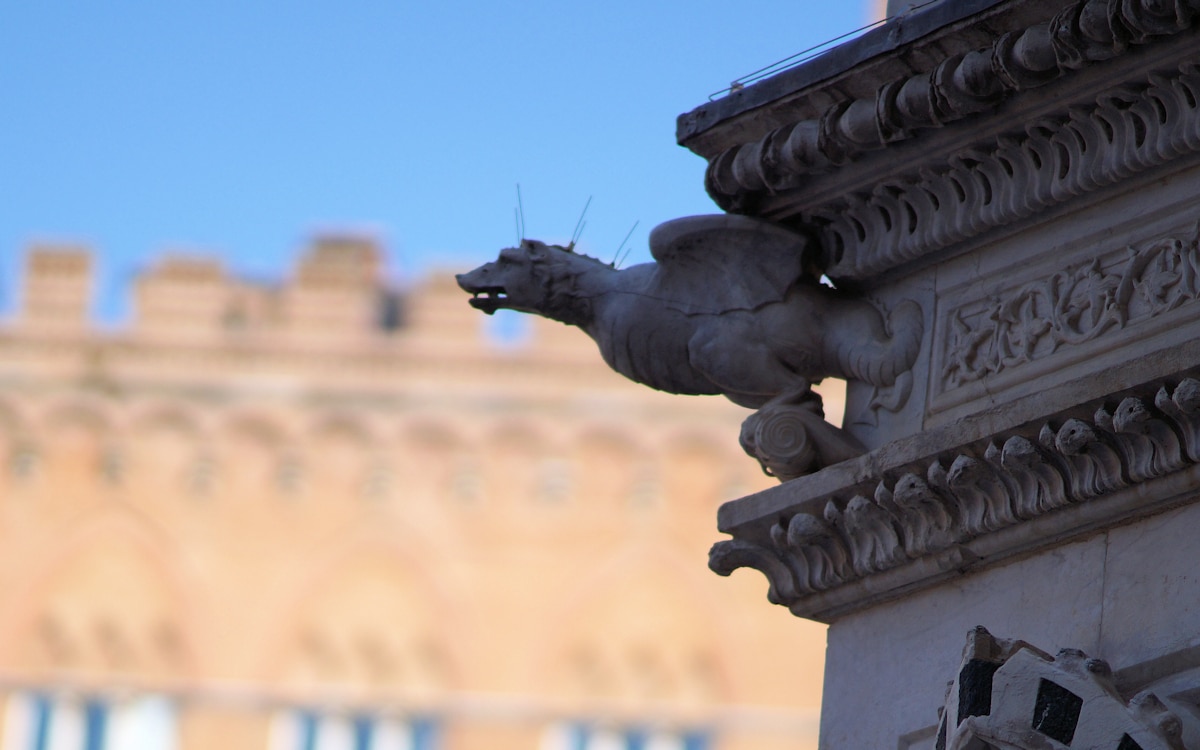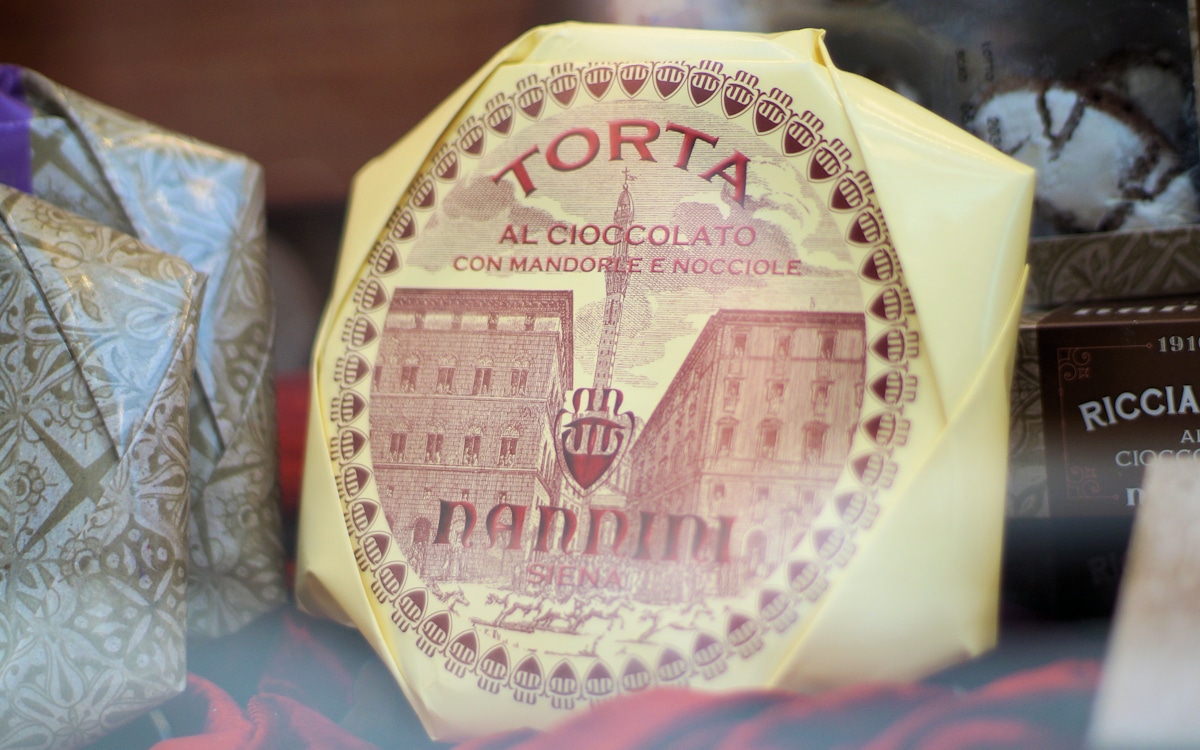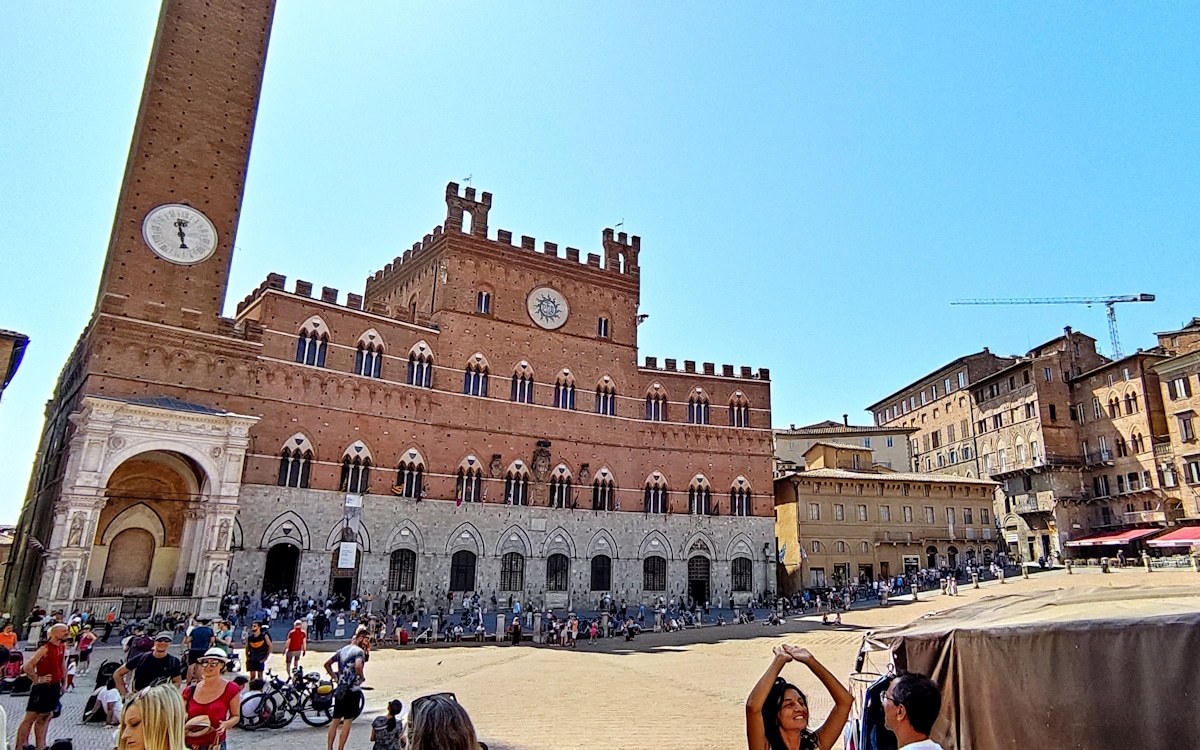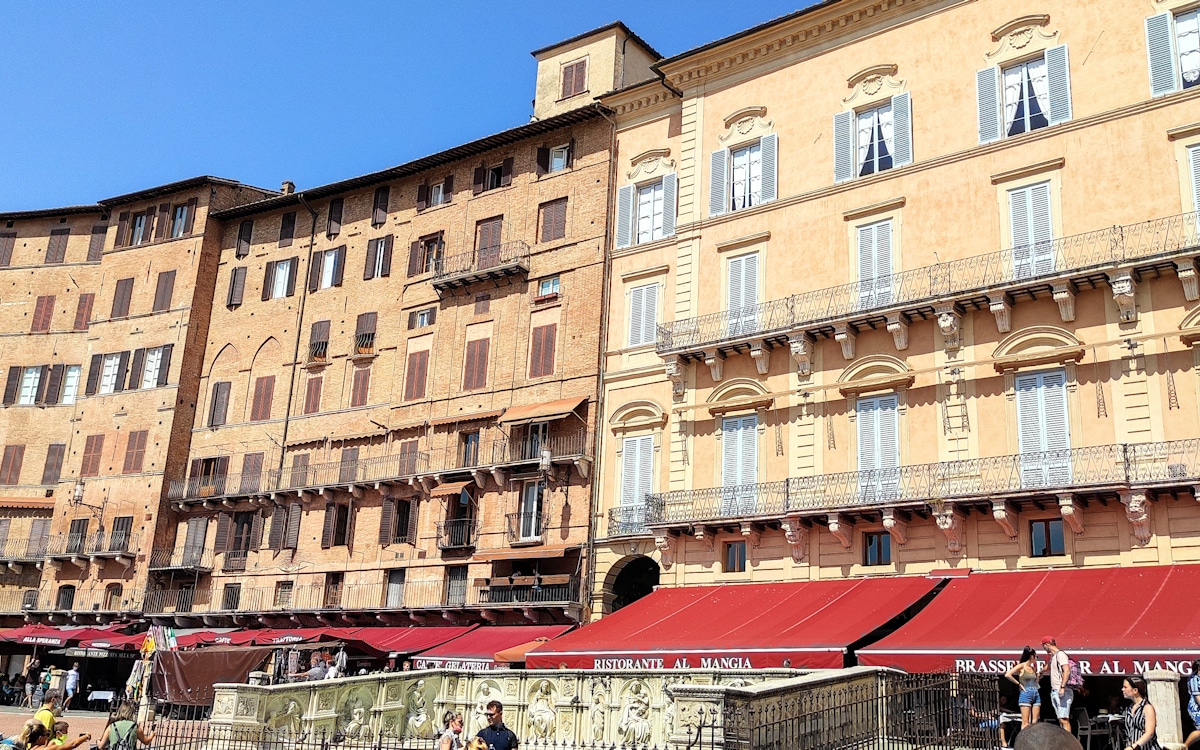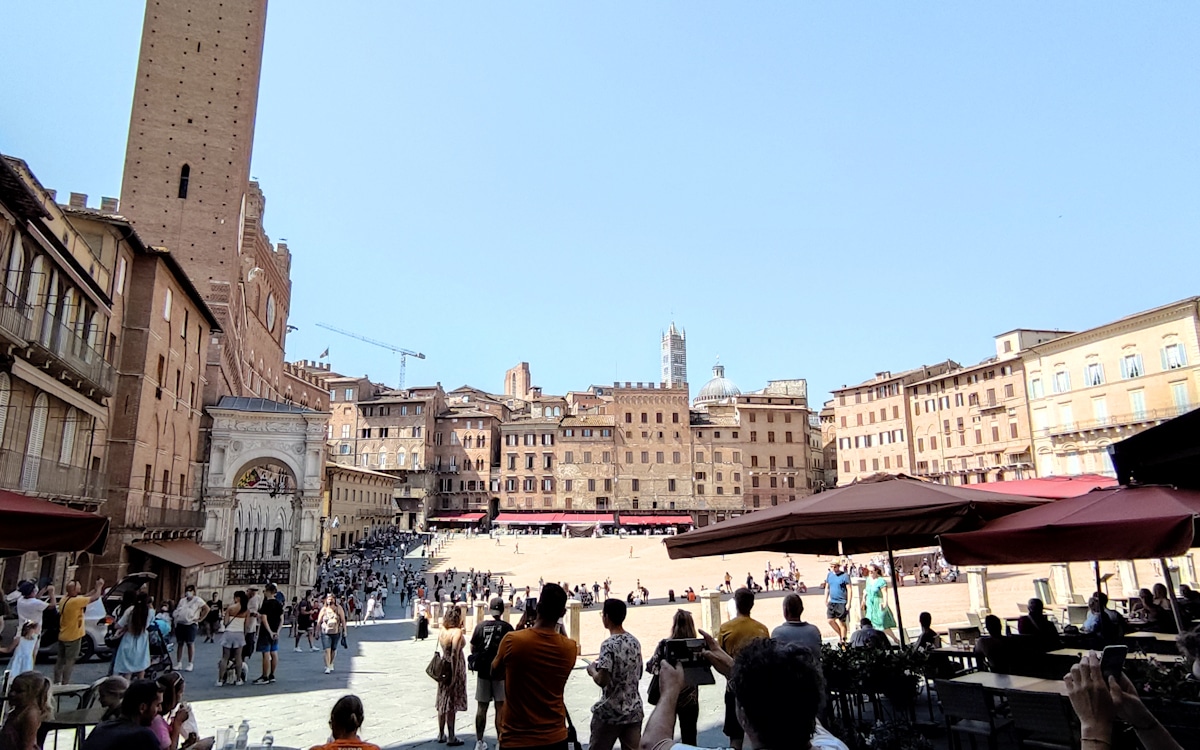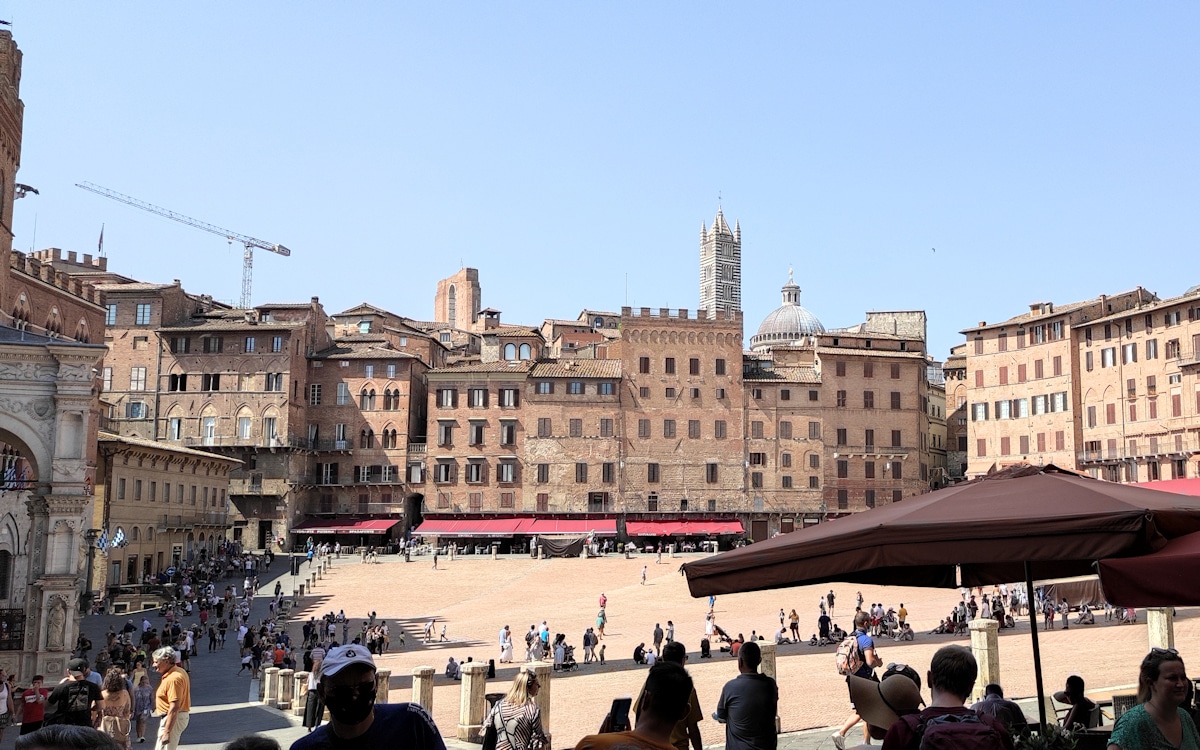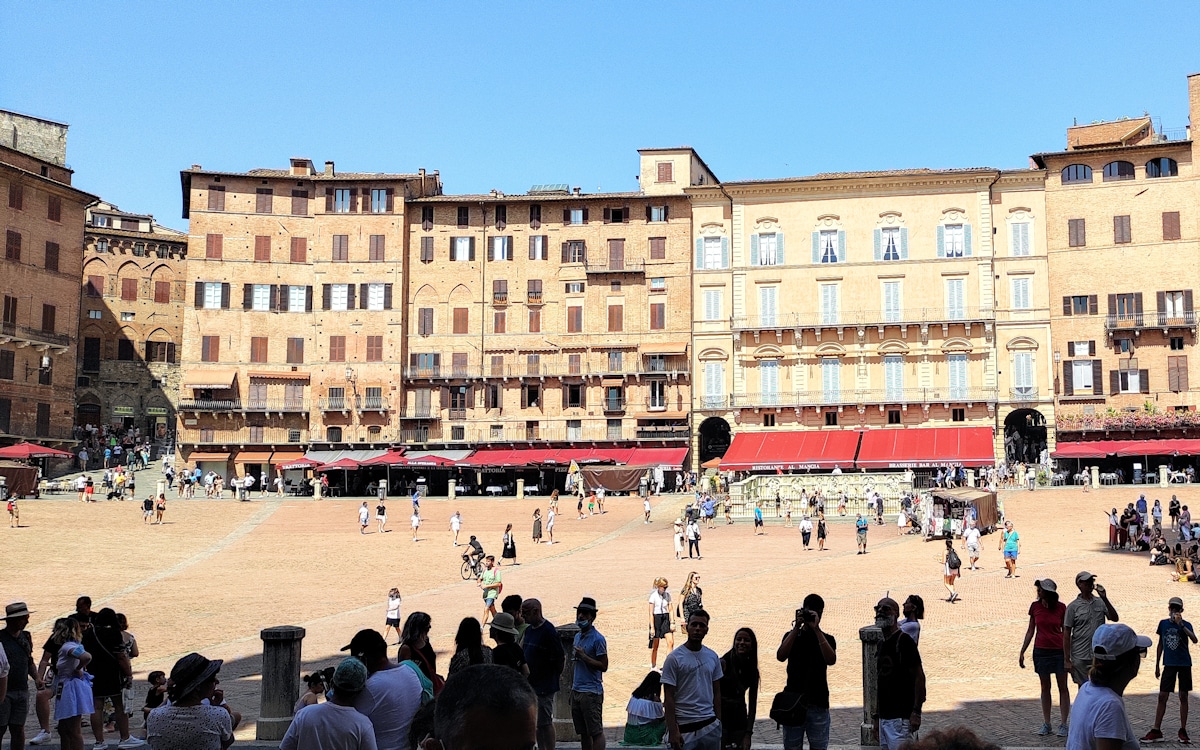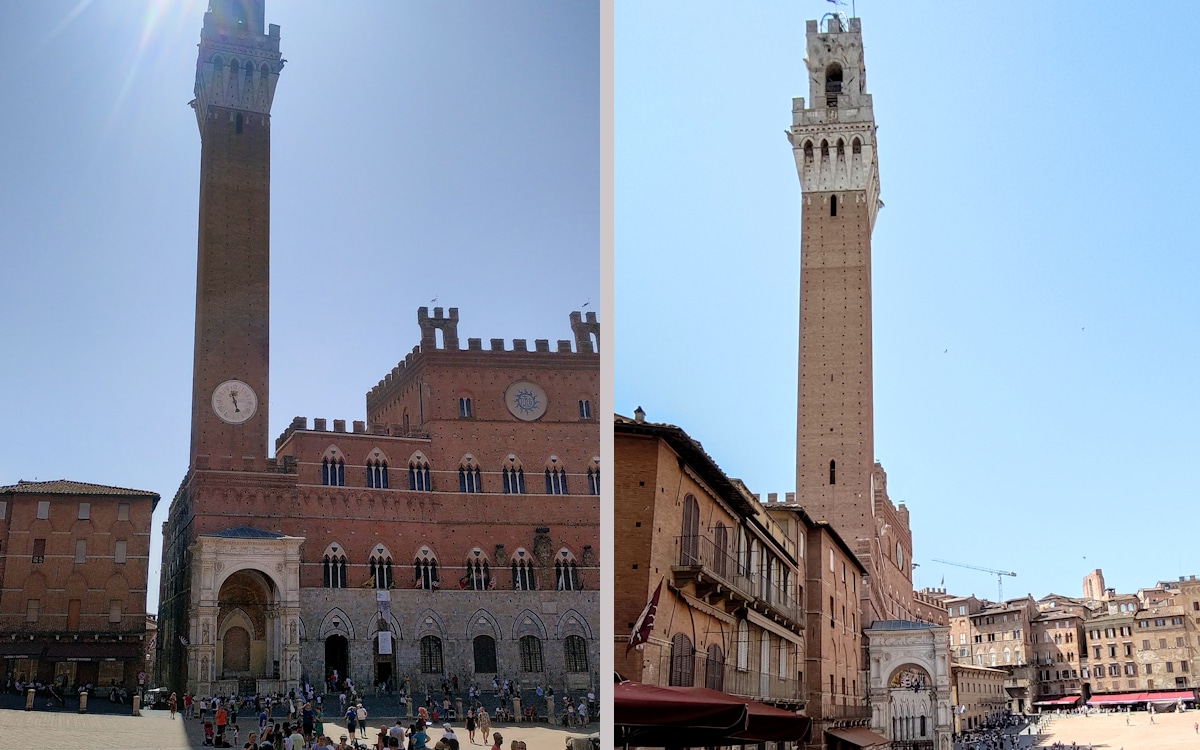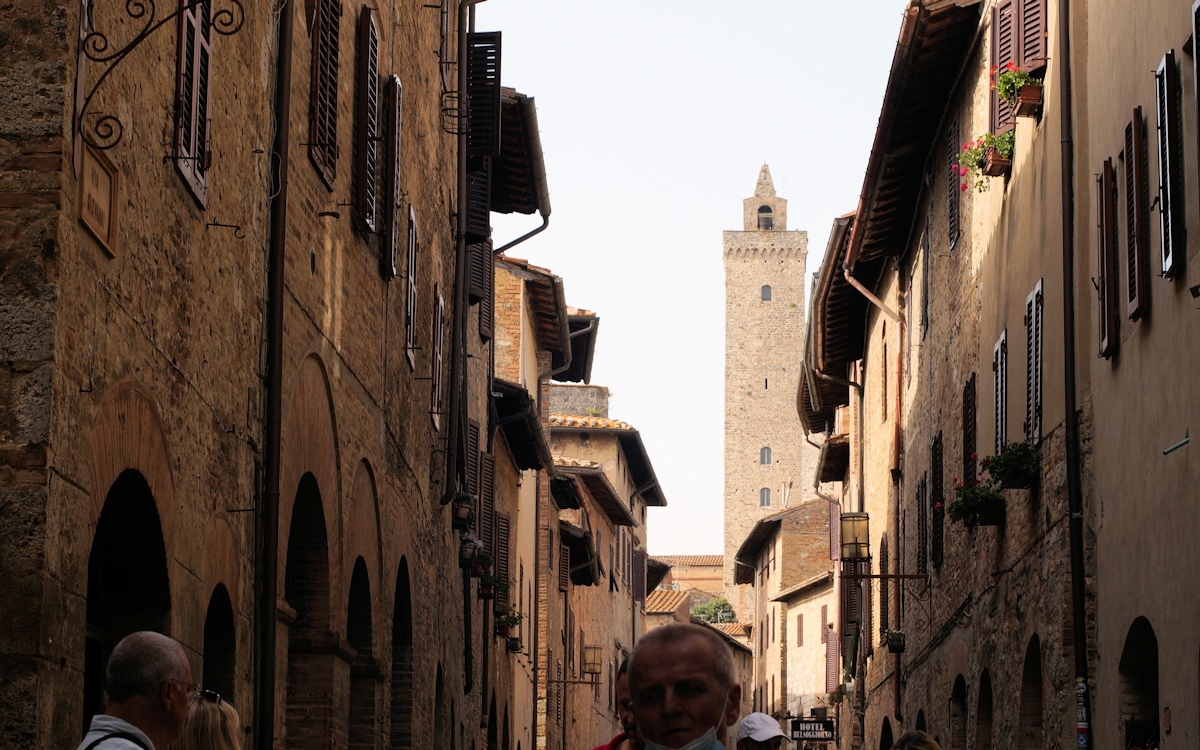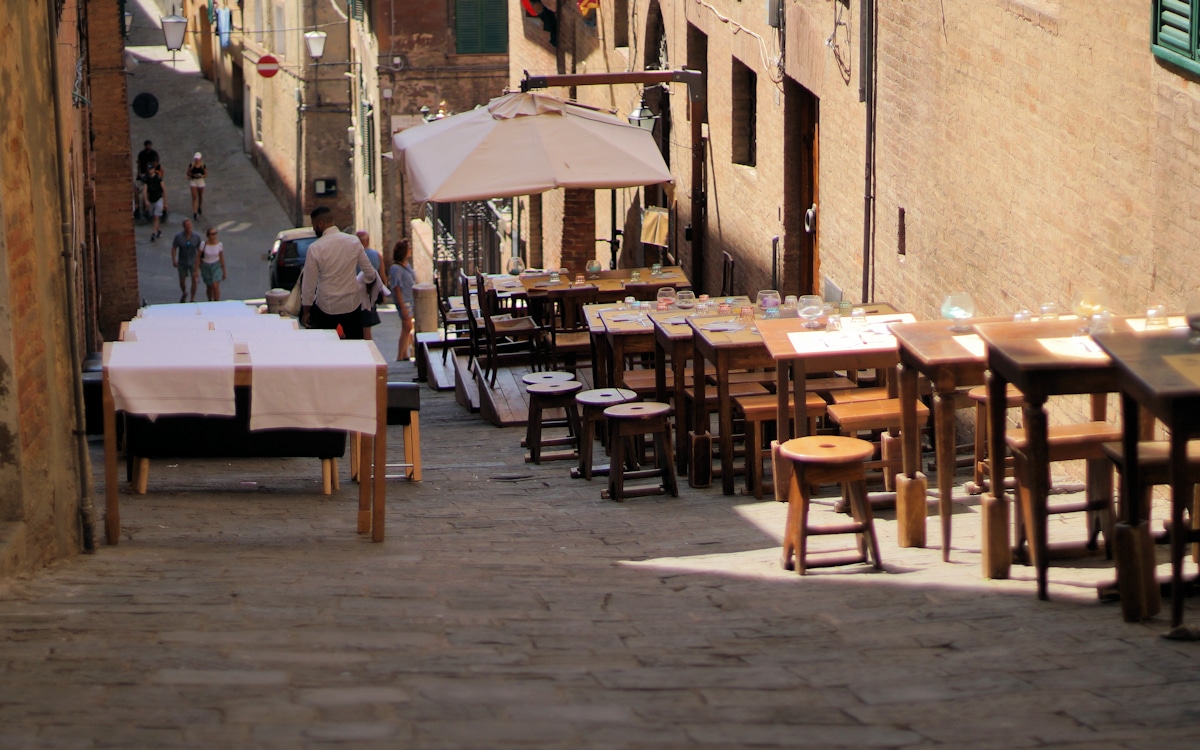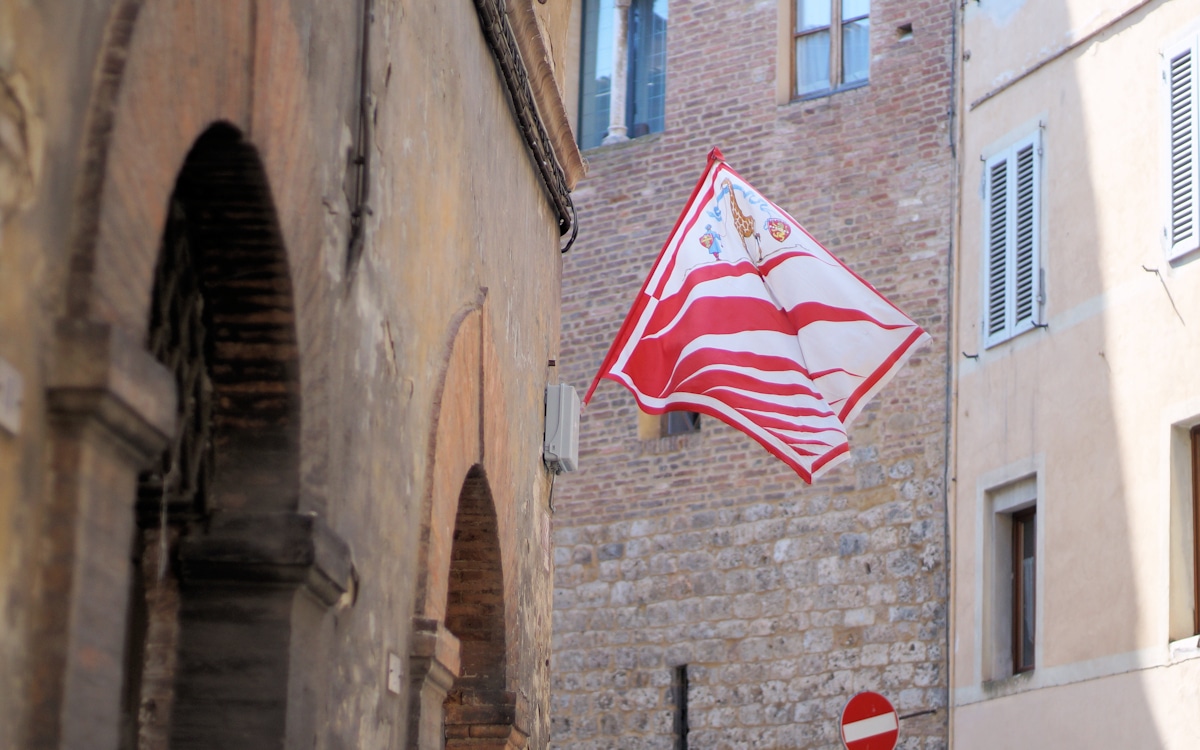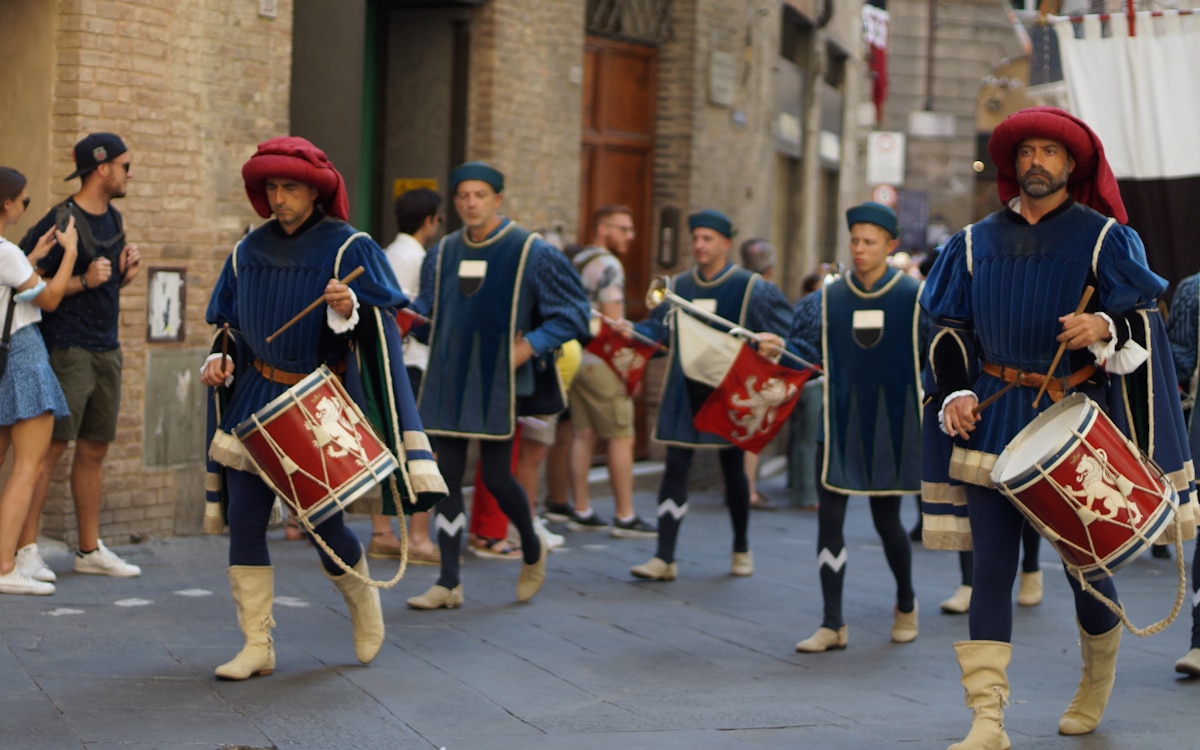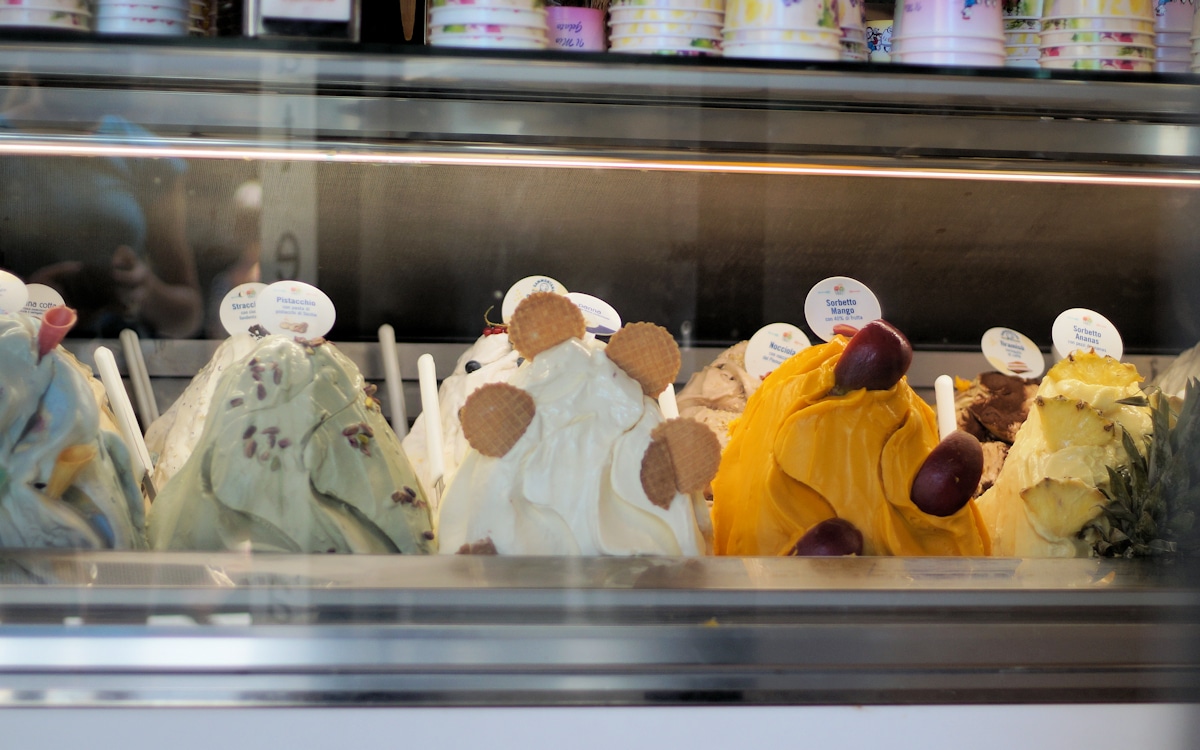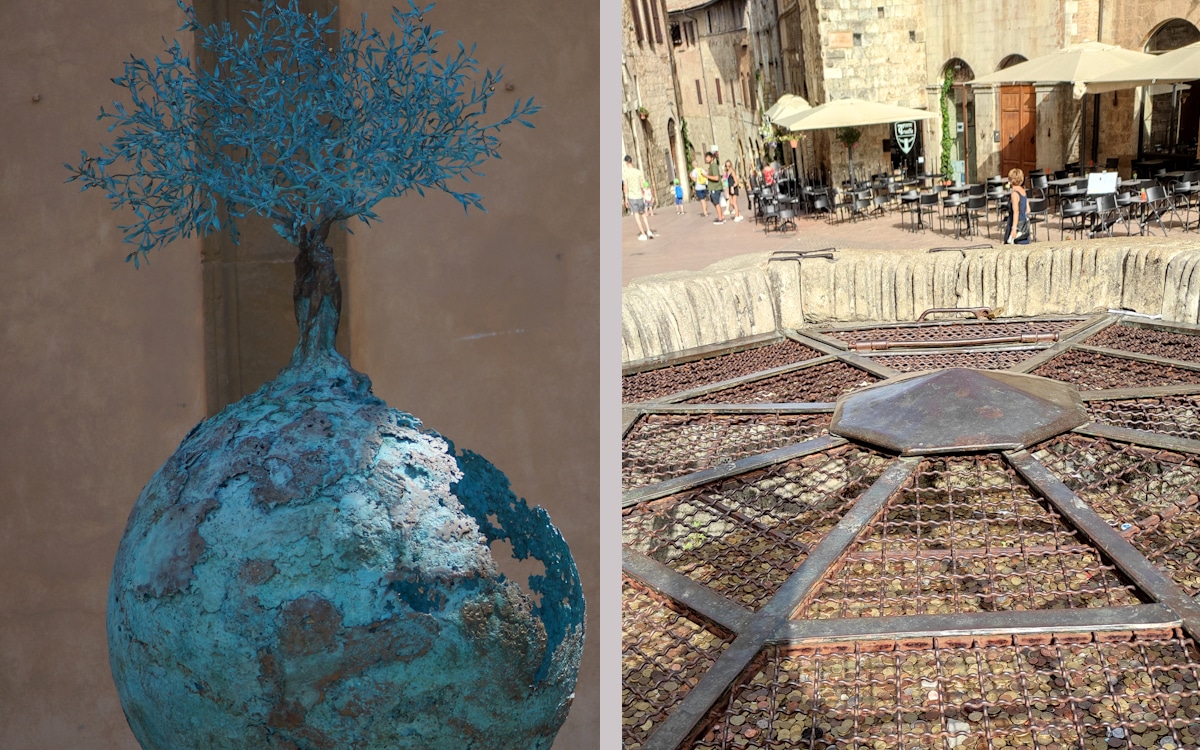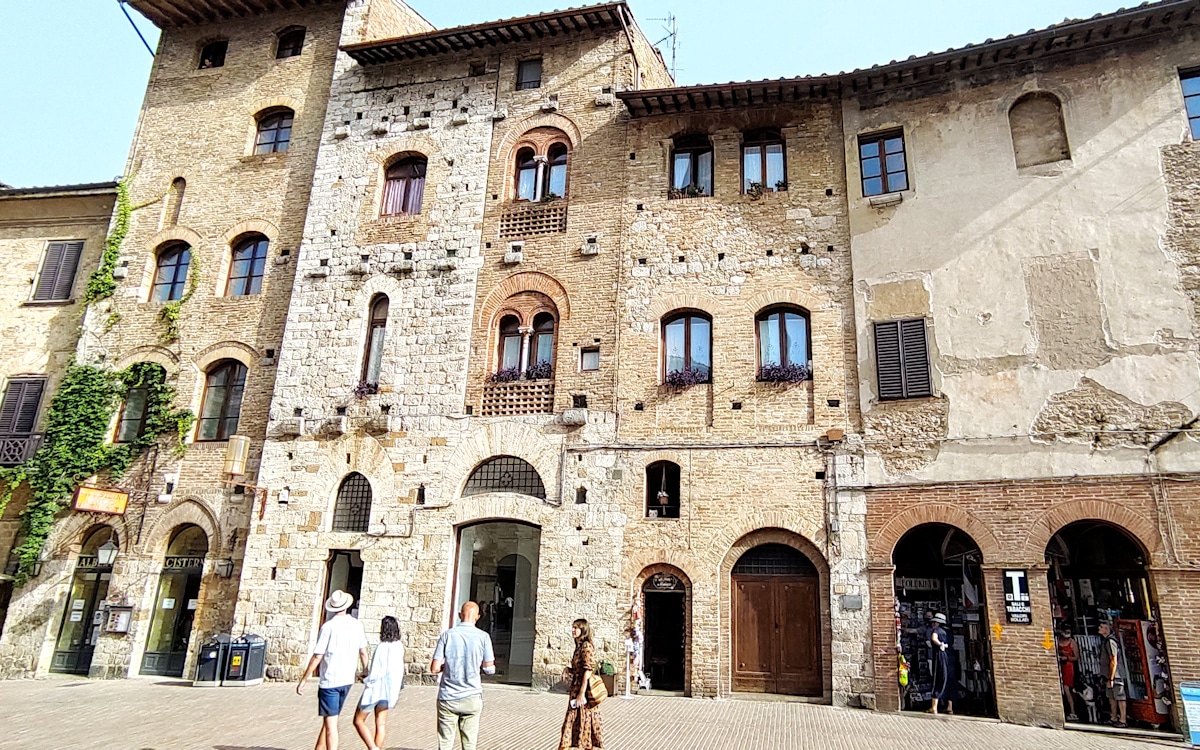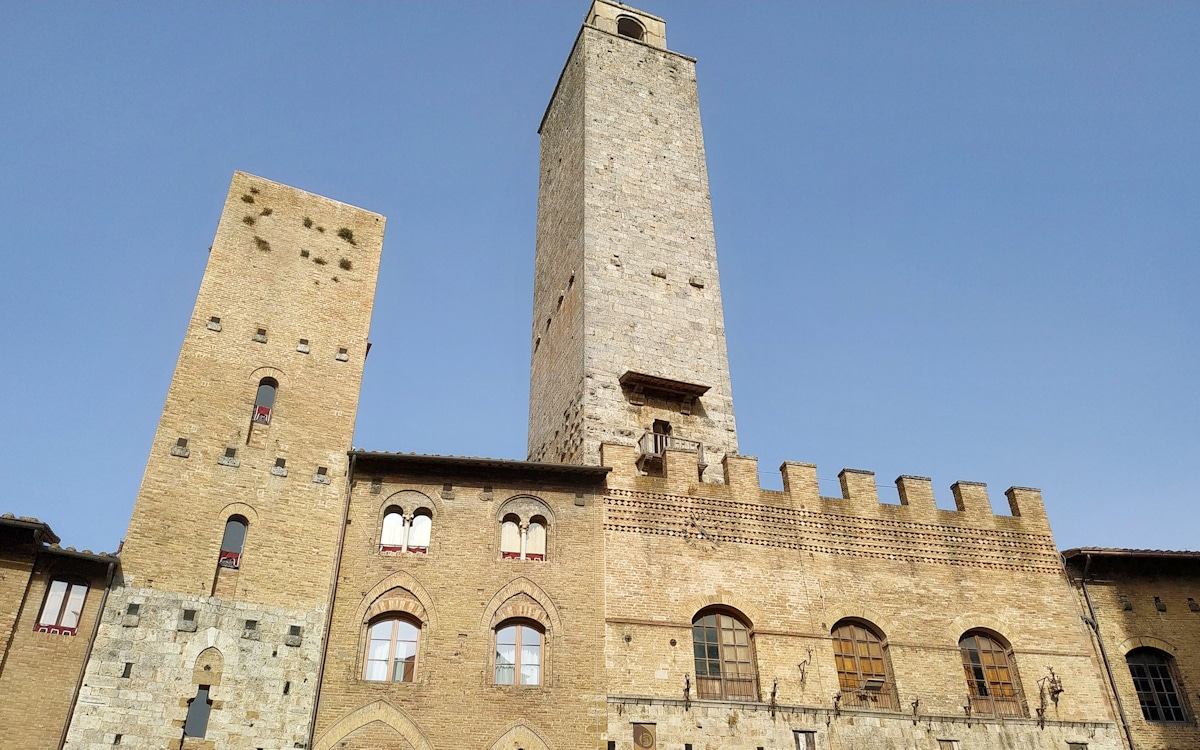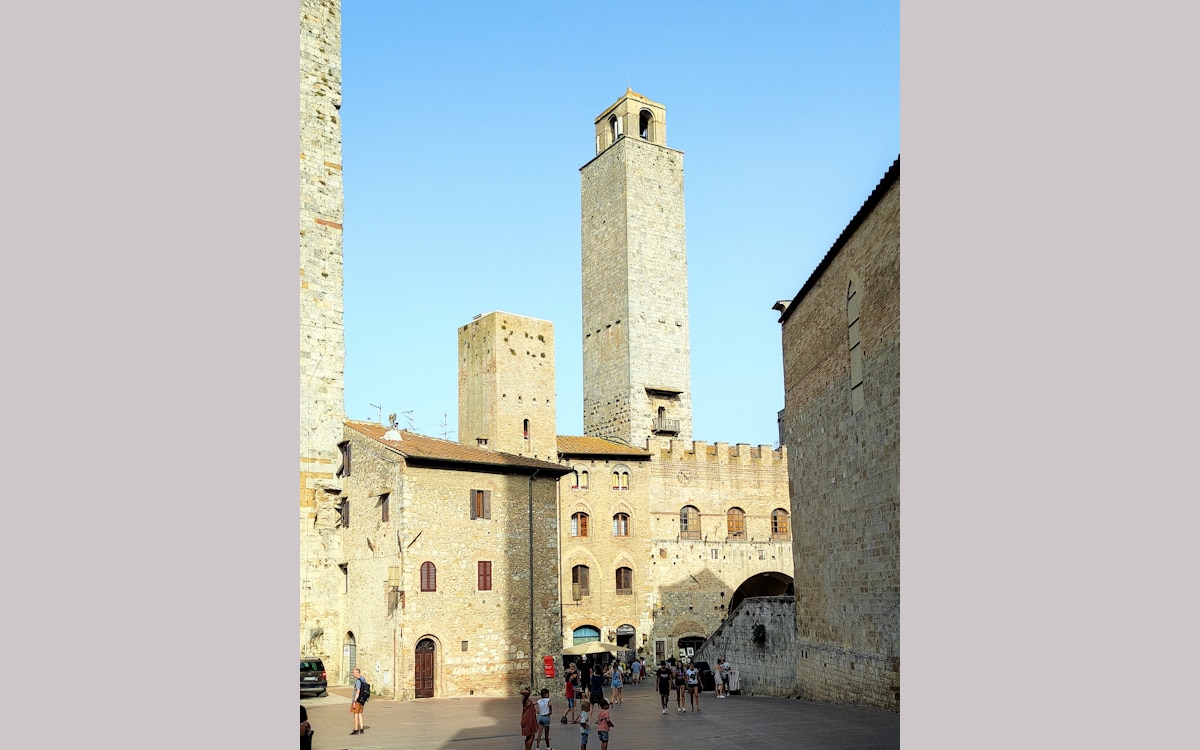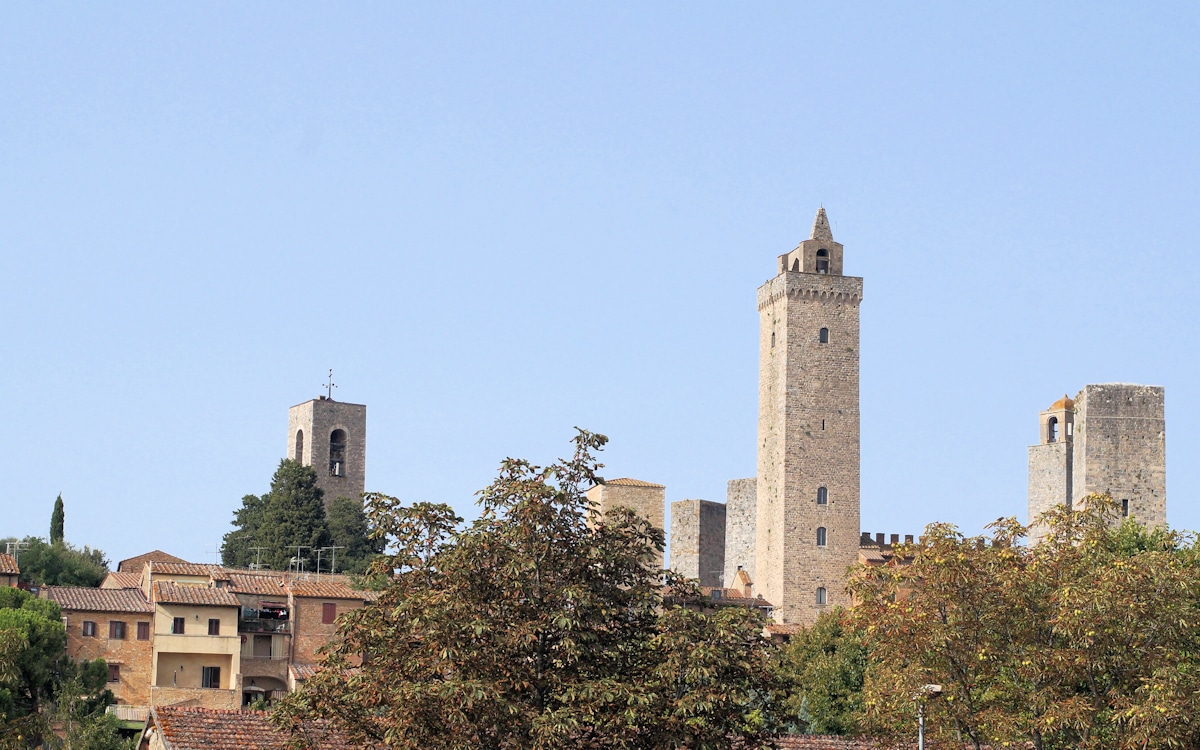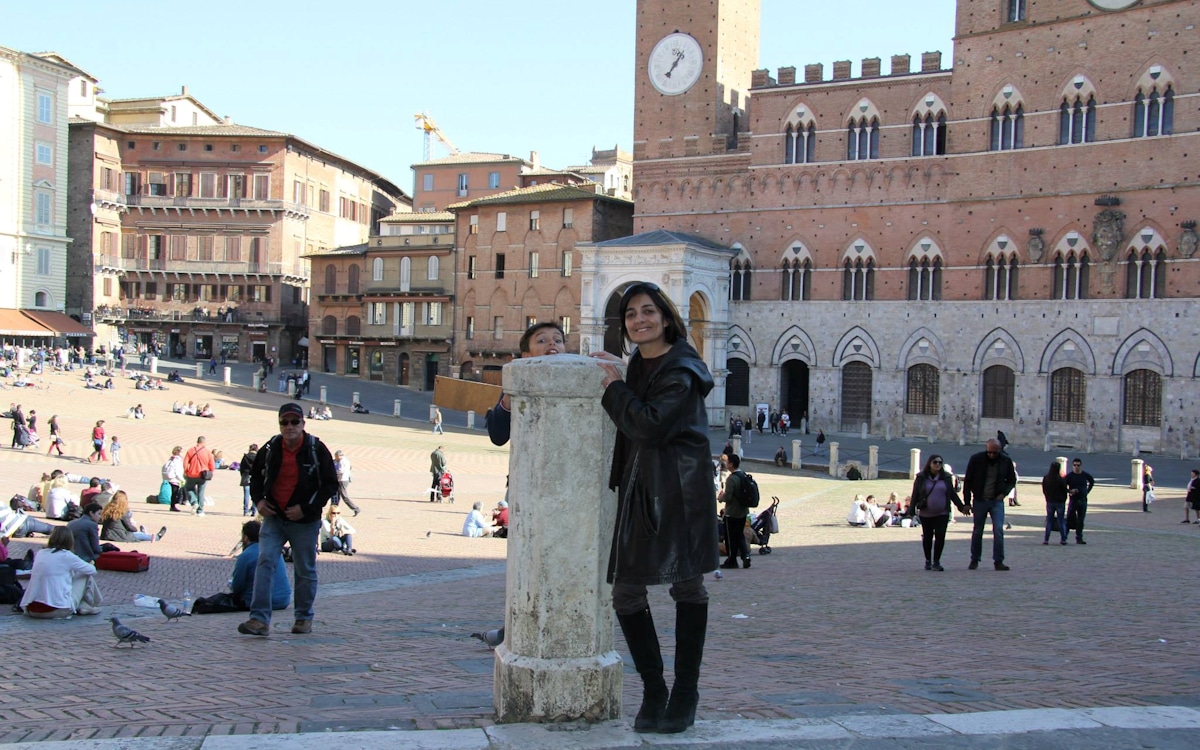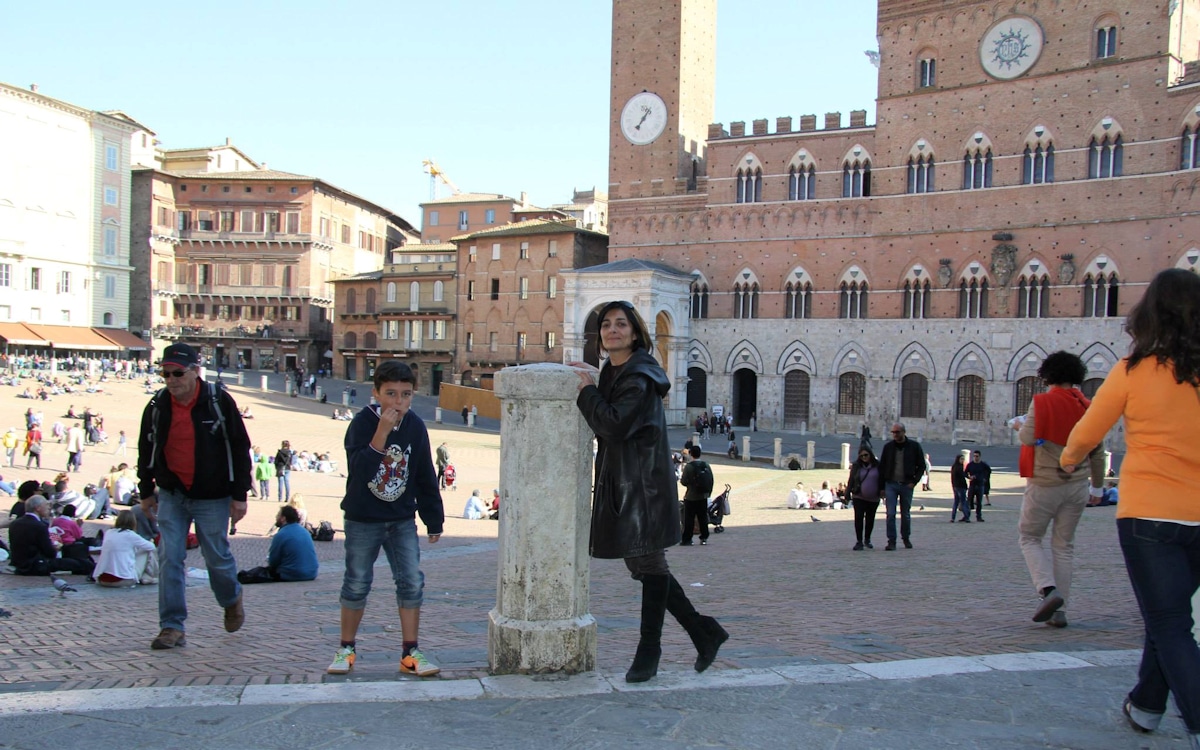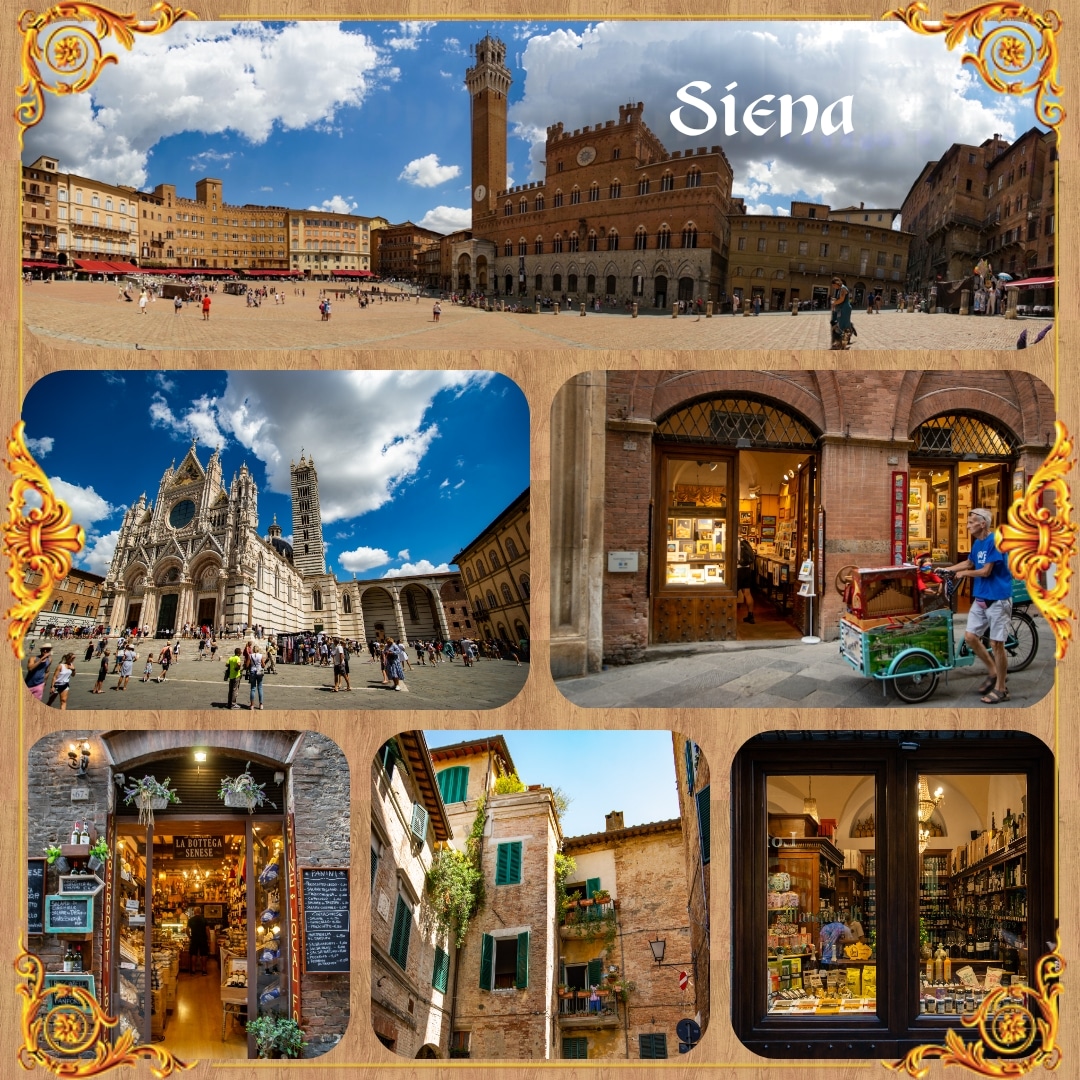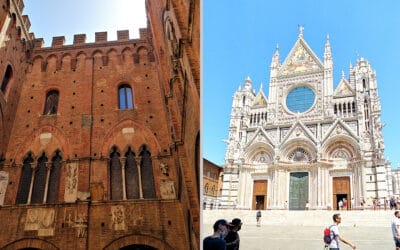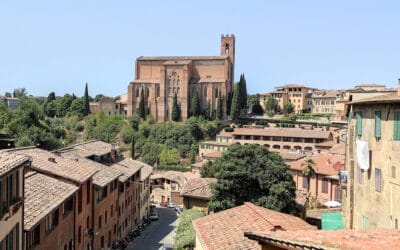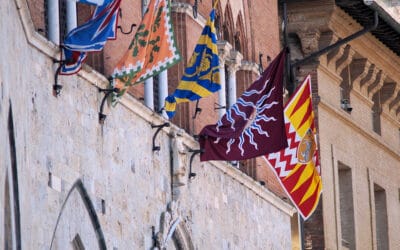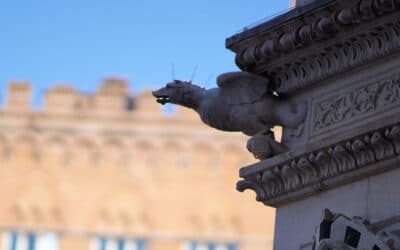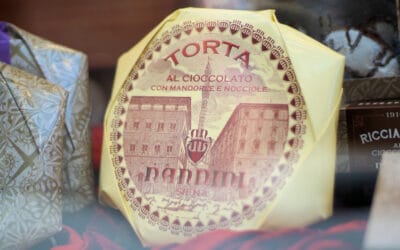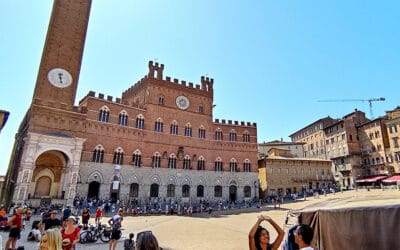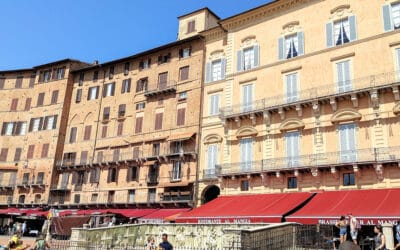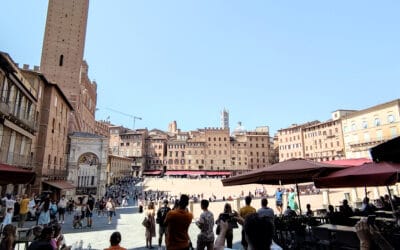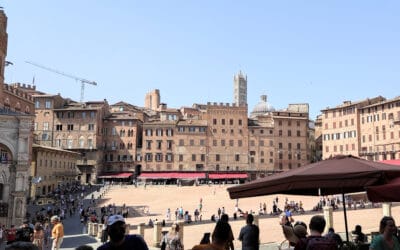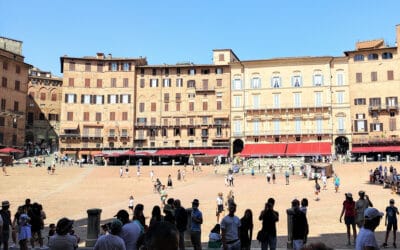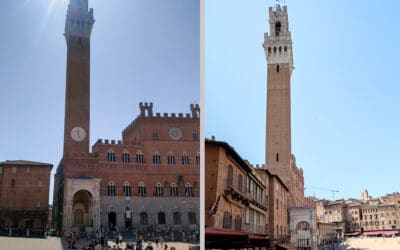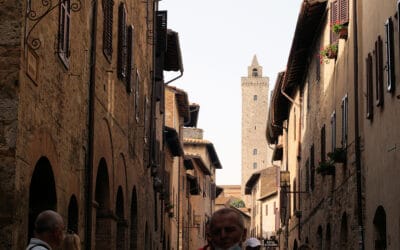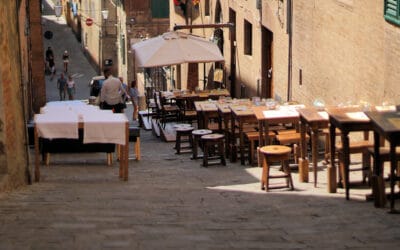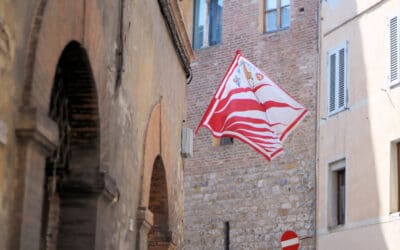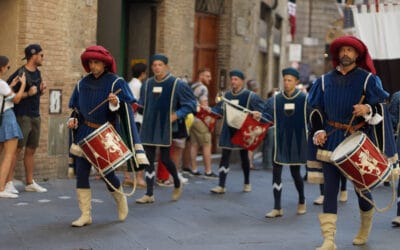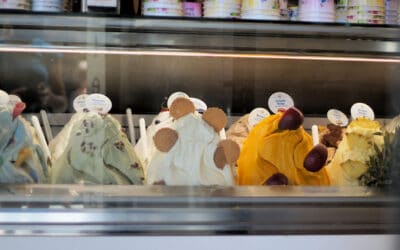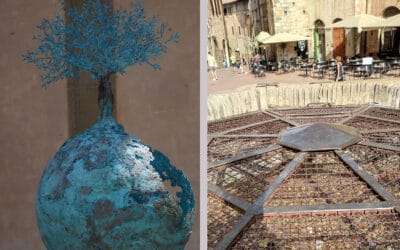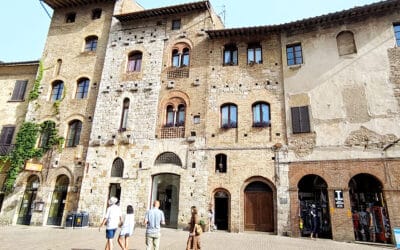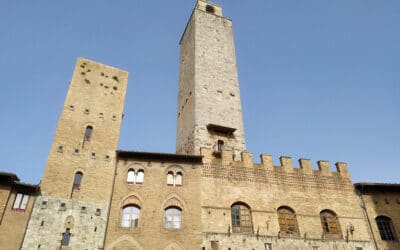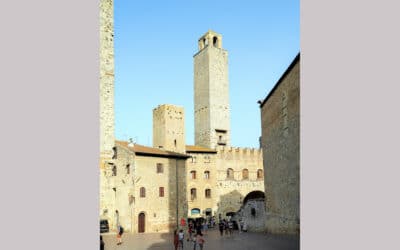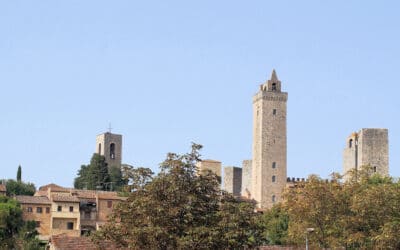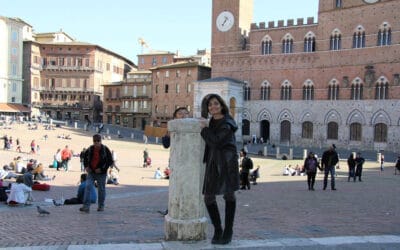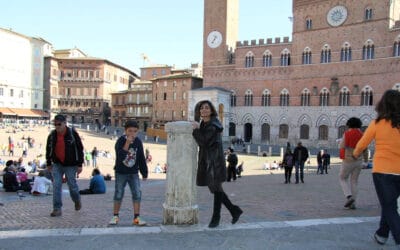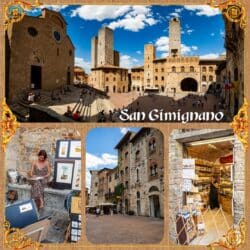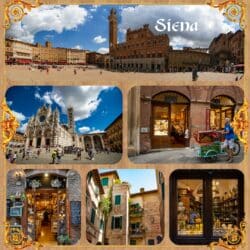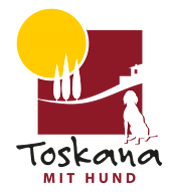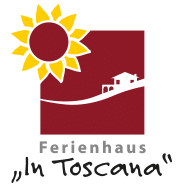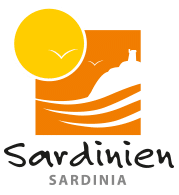
Home » Tuscany advice and service » Tuscany travel guide and city information » Photos and information Siena and province
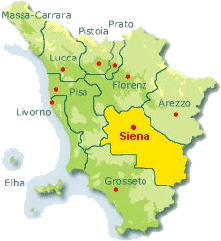
Photos and information about Siena and province
For “Sienese” it is the most beautiful city in Tuscany anyway – but holidaymakers are also amazed by its incredible splendor and beauty! The whole center is wonderfully suitable for pedestrians (so-called blue zone) and neither cars, traffic nor noise will affect your visit!
Starting in the north, Siena's mighty brick basilica “San Domenico” impresses. Standing out, it only gives a narrow, first impression of the diverse beauty of what is on offer. In the old town, the cathedral and the mighty, filigree town hall tower tower at the highest point in the city. The “Battisterio di San Giovanni” and the associated “Museo dell' Opera Metropolitana” (Centro) form the center, but at the same time also the starting point for a long journey through Italian art and history. From the “Museo Civico” to the “Pinacoteca Nazionale” one likes to visit the many wonderful basilicas “San Domenico”, San Francesco, among others; the churches “Santa Maria dei Servi” and “Sant' Agostino” border the southern and western edges respectively.
This city offers all of this and countless other options, as well as a wonderful selection of culinary delicacies - something for every taste (e.g. the famous, famous Ricciarelli), colorful glazed ceramics and markets of all kinds.
Siena represents a wonderfully successful mix of art, good cuisine and tourism! The city fathers and residents have succeeded in maintaining, building and revitalizing the wonderful atmosphere! To preserve the old with respect and bring in the new! It is also particularly nice to see if you would like to follow our recommendation at the end and have a drink in the “Piazza del Campo” at the so-called “blue hour” – in the “most beautiful piazza in Italy”.
The Palio
Although slightly controversial, this nostalgic horse race is one of the highlights of Tuscany's festivities! The whole of Siena and more is on its feet to support, cheer on and of course win the 17 different contrades (comrades from the different parts of the city)! Ardent sympathy is guaranteed for the teams, which have wonderful names such as Drago (Dragon), Civetta (Owl), Istrice (Porcupine), Onda (Wave)! Each contrade organizes a party before the race to which visitors are also warmly invited - you can purchase tickets from the respective contrade. Starting at 20 p.m. on the “Piazza del Campo”, the spectacle is absolutely worth seeing and unforgettable, when 10 classy racehorses will simultaneously “chase” three times around the small square and after just a few minutes the winner will be presented with the Palio (=silk victory ribbon with the image of the Virgin Mary) is presented with wild enthusiasm. In some churches you can later find horse hair, flags, etc. as a thank you to the Madonna and a few tears flow that day, you can quietly hear vows of revenge murmured - which will hopefully have dried and faded away by next year.
Our advice:
“Conca di Oro” at Banchi di Sopra 24, north of Piazza del Campo. This cafe belongs to the Nannini family, which... Gianna Nannini and her brother dem Former racing driver Alessandro Nannini are among the “contemporary celebrities” of this city. This family business with its traditional coffee roasting house has been at home here since 1943 and, among other things, attracts visitors with its beautifully packaged “Panforte Siense”. Not just intended for “celebrity watchers”.
Holiday homes near Siena
Formerly the so-called “transport hub for Rome pilgrims from northern Europe”, this small, enchanting place is now a magical place to enjoy the peace and quiet of the Tuscan landscape! The Romanesque parish church located directly at the city gate is particularly nice; it is one of these “jewels”, which is why this landscape is often perceived as particularly endearing.
4 km from San Quirico, the cozy thermal bathing resort invites you Bagno Vignoni, with its warm healing water in the Katharinen pool, to relax “tired limbs” from all the sightseeing and get fit again! You can experience breathtaking scenery and absolute peace in and around it “Castello di Ripa d'Orcia” find. Anyone who “courageously masters” the path described as adventurous will simply be thrilled!
Of course, festivals are also celebrated here: the city festival “Festa del Barbarossa” on the 3rd Sunday in June offers a colorful, lively insight into bygone times with its parade in historical costumes. The festival day on the first Sunday in September with a small market and celebratory procession is also enchanting. Romantic idyll in a magical landscape!
Formerly the so-called “transport hub for Rome pilgrims from northern Europe”, this small, enchanting place is now a magical place to enjoy the peace and quiet of the Tuscan landscape! The Romanesque parish church located directly at the city gate is particularly nice; it is one of these “jewels”, which is why this landscape is often perceived as particularly endearing.
4 km from San Quirico, the cozy thermal bathing resort invites you Bagno Vignoni, with its warm healing water in the Katharinen pool, to relax “tired limbs” from all the sightseeing and get fit again! You can experience breathtaking scenery and absolute peace in and around it “Castello di Ripa d'Orcia” find. Anyone who “courageously masters” the path described as adventurous will simply be thrilled!
Of course, festivals are also celebrated here: the city festival “Festa del Barbarossa” on the 3rd Sunday in June offers a colorful, lively insight into bygone times with its parade in historical costumes. The festival day on the first Sunday in September with a small market and celebratory procession is also enchanting. Romantic idyll in a magical landscape!
Holiday homes near Montepulciano:
“Ancient” Etruscan city in the steep tuff rocks
Thanks to “Porsenna”, the mythical king of the Etruscans, Chiusi became a “highlight” and famous in early times. Even today, the Etruscans still play an extremely important role in visiting this village. Impressive finds from archaeological excavations, which continue today, can be admired in the Etruscan National Museum of Archaeology. “At every turn” you will find amazing relics from this time and thus a great documentation of a long-gone, highly intelligent culture. Particularly exciting is the “Labyrinth of Porsenna”, which consists of a winding underground passage that leads to a building from the 1st century. v. BC. Even in the so-called “modern times” the cathedral (in the Basilican style) was created, one of the oldest churches in Italy today.
Not far from the city center (approx. 3 km), a lake invites you to have a cozy picnic and linger. History can be so relaxed!
From Montalcino (10 km south) surrounded by fields, gorse-covered hills and olive groves, you will find the abbey church “Abbazia San't Antimo” in a very quiet valley. The apse, made of yellow-brown travertine and alabaster stone, blends harmoniously into the nature of this picturesque landscape almost “unnoticed”. Particularly beautiful are the large cypress and olive trees that “flank” the square bell tower. An absolutely tranquil place!
Fine Renaissance art in an impressive, quiet monastery atmosphere.
Far away from the “hustle and bustle of everyday life” - this impressive monastery is located in the middle of a dreamy forest landscape. The incredible, almost magical peace that this place radiates is kept alive every day by the monks who live there and their rules. A certain amount of devotion and peace is not only necessary to marvel at the wonderful frescoes and works of art, but also shows respect for the monks. Pilgrims are often found here, as it is not only one of Tuscany's greatest art treasures, but also "sacred treasures". The piety of this place should not deter you; do not hesitate to get to know this special place, which is so unique in terms of art history. Later you should definitely stop off at “la Torre”, the restaurant in front of the entrance gate to Monte Oliveto Maggiore. The extremely tasty, rustic cuisine offers a successful refreshment for mental stimulation.
Exuberantly overflowing with enthusiasm about the “masterpiece of the mighty wall ring,” Dante wrote it down in his literary masterpiece the “Divine Comedy,” Chapter Hell XXXI!. The enthusiasm for this unique border fortress, which is still complete today, dates back to the 13th century. remained until today. The impressive wall ring is one of the most frequently visited attractions in the province of Siena and, among other things, also forms the economic basis of the city's approximately 6700 residents.
In the 13th century Built, this structure represents an enormous advance in Tuscan architecture. The 14 towers, seven of which have been very well restored, gave the residents complete control of the surrounding terrain. A feeling of security that can still be felt and seen today.
Primarily famous worldwide for its excellence Brunello (approx. 1400 hectares of cultivated area), this city also offers “the finest” Tuscan architecture.
The pentagonal fortress is still imposing and “impregnable” today. The Brunello and Rosso di Montalcino wine cooperative and the Institute for Viticulture have their headquarters in the “Palazzo Comunale”. Far away from wine and vines, you can visit the former Franciscan monastery with church, as well as the Misericordia church, whose cloister has interesting frescoes and tombstones. The fantastic panoramic view over the valley from the viewing terrace of the pilgrimage church “Madonna del Soccorso” invites you to rave about it. The Gothic-Romanesque rosettes of the Church of San Agostino and many other buildings make this city a varied experience of serious pleasure (religion, culture & history) and light, often no less serious pleasure, wine!
What we also find particularly noteworthy are the ceramic products from this region, which are an absolute specialty and are particularly beautifully made and beautiful to look at. The “Sagra del Tordo” on Sunday last October offers an exciting, extremely worth seeing folkloric competition that is “fought” between the city districts. The winners are determined in the form of archery and the hunting season opens at the same time! Robin Hood & companions in “Italian”!
A truly “exemplary showpiece” of Cistercian sacred architecture awaits you here! In honor of the saint who was converted from an adventurous knight. The monastery, built by the spoken Cistercian monk Galgano, offers, in addition to its inimitable architecture, a wonderful place for moments of wonder, peace and quiet.
Above the monastery is the “Oratorio di San Galgano al Montesiepi”. We also dedicated this wonderful architectural building to St. Thanks to Galgano, who is said to have rammed his sword into the rock at this exact location as a symbol of his vow to non-violence. Great emotions “held” in stone! You should pay particular attention to the frescoes, which revealed an interesting secret during the extremely complex renovation.
The almost flawless nature that surrounds this town offers a wonderful insight into why this place is so “overflowing with health”! Famous for its thermal springs for over 2000 years, this place has become one of the most important thermal centers in Italy. Here you will find more than 200 spa facilities and hotels, which are particularly successful for kidney and liver diseases, as well as inhalation therapies that are used to restore the ability to move and functional rehabilitation. When you visit the newly opened “Archeologico delle Acque” museum, you can once again marvel at the incredible diversity of Etruscan and Roman excavations, which are among the many outstanding archaeological finds in the entire area. In any case, visitors should take time to visit the historic center of the city. The small, romantic streets that lead to picturesque squares will delight you for a long time!
Located in the lush green upper Elsa Valley on the highest hill (324 m), you will find the often aptly described “Manhattan of Tuscany”! Even from a distance you can enjoy the sight of the wonderful residential towers (also called gender towers), which are now 15 and 650 years ago. In the Middle Ages, these towers were a symbol of money and fame for a long time, according to the motto: “The higher the tower, the more prestige and wealth of the family.” The city is very popular and offers holidaymakers a wonderful atmosphere and sights spanning 72 years very well preserved architecture and history. On the trail of the enchanting flair, you will find another reason why San Gimignano has been a World Heritage Site since 650 in the well-preserved, medieval “Piazza della cisterna” with its fountain (Italian: Cisterna) and its magnificent palaces. You should visit the Rocca castle ruins with its enchanting garden and wonderful view, as well as the Romanesque cathedral “Santa Maria Assunta” in the city center - each of these buildings is a piece of unmistakable Tuscany. A visit of a “different kind” is the “Museo della Tortura”. In the middle of this cozy place you can experience what almost “cruel ingenuity” was used in the Middle Ages for the purpose of torture. To quickly turn your goosebumps back into well-being, treat yourself to a hike into the valley to the medieval washing facility and enjoy the view “back” of the towers and landscape!
North of Abbadia San Salvatore, at the foot of Monte Amiata, lies the pretty, small thermal town of Bagni San Filippo. Actually, the settlement only consists of a tranquil handful of houses that have become famous thanks to a natural attraction: an almost unreal-looking white sinter rock in a wooded gorge, called “Fosso Bianco” (white pit). Here, mineral-rich water trickles down a high rock face made of sinter deposits and collects in natural pools that look like tubs with milky-green bath water that still has pleasant, lukewarm temperatures even in late autumn. Here you can use the lime and sulfur water for free and even enjoy a neck massage. You can also swim in the spa hotel's thermal bath, which was renovated in 1997 and is also available to non-hotel guests. There is a small waterfall here and the temperature is 40 degrees.
Vivo d'Orcia is a small village a few kilometers north of Abbadia San Salvatore. What is particularly interesting is the former hermitage, which lies slightly below the town in a romantic location on the banks of the Vivo. You can only get here on foot. The path is signposted from the main square (“Eremo – Via IV Novembre) and leads over a stone bridge, past the ruins of a former mill and a castle, which is now privately owned. Finally, you enter the “Borgo Principale” through an archway.
This lonely and sleepy borgo east of Monte Amiata lies at an altitude of about 800 meters above the Paglia river valley. Radicofani is dominated by a castle on a basalt rock that was only rebuilt in the 19th century and is visible from afar. It is the symbol of southern Tuscany and, above all, was once the residence of the notorious robber baron Ghino di Tacco. He went down in literature as a kind of Tuscan Robin Hood because, in order to avenge his father, who was executed by the Sienese, he only robbed the rich, but occasionally even gave something to the poor. From the tower of the castle, at a height of approx. 940 m, you have a fantastic view over the Val d'Orcia.
The dark stone houses of the small Borgo exude a medieval flair. Both churches in the center. the Romanesque Pieve San Pietro, which was completely rebuilt after the World War, as well as the Romanesque-Gothic church of San'Agata, contain terracotta works by Andrea della Robbia. The former Medici villa, the Palazzo della Posta, was used for a long time as a customs and post office and was later converted into a hotel, whose rooms were once also occupied by Dickens and Montaigne. The fountain opposite is decorated with the Medici coat of arms.
This small village built from yellow travertine stones looks like something out of a picture book. The square at the city gate offers a beautiful view of the surrounding hills. The jewel of the place is the Chiesa dei Santi Leonardo e Cristoforo, which dates back to the 13th century. Restoration work in 1933 brought to light remarkable frescoes, such as an almost 5 meter high depiction of Christopher, probably from the 15th century, or the so-called “Grande Arcosolio”, which tells stories from the life of Saint Nicholas. The fortress tower in the upper part of the village is privately owned. Monticchiello is known for its “teatro povero”. The so-called “Poor People’s Theater” was created in 1967 as an amateur theater at a time when the town lost a large part of its population due to rural exodus. Since then, every year in the last week of July and the first two weeks of August, a folk play is performed here that brings current topics of village life to the stage.
The Chianti-Classico, which is located on the border between the provinces of Florence and Siena, has always been a wine-growing region. Vine juice flowed here as early as Etruscan times. In 1924, the winemakers of this area formed a cooperative (Consorzio del Vino Chianti Classico) to monitor the quality of their wines. The distinguishing mark is the “Gallo Nero”, the black rooster. Hikers can hike from wine town to wine town through the gently undulating Chianti hills.
Castellina in Chianti (Province of Siena)
Castellina is located roughly in the middle of the Chianti region in the long-disputed border area between the provinces of Florence and Siena. The place is located south of Greve at an altitude of 578 m. The castle complex from the 15th century is well preserved and art exhibitions are shown in the summer months. The other attraction of the place is the tunnel-like Via delle Volte, which is part of the old Florentine city fortifications. The houses integrated here are beautifully restored and illuminated in the evenings. The “Strada dei Castelli”, the castle road, begins in Castellina and winds east through dense holm oak forests. Castles, palaces and monasteries are lined up here.
Radda in Chianti (Province of Siena)
Radda is a walled medieval town with a small market square dominated by a 15th-century town hall. The rustic loggia is worth seeing. Despite tourism, the place has managed to retain its medieval charm. There is a vaulted corridor from the 12th century (Camminamento medioevale), which leads past an old bakery where bread is still baked by hand today, just as it was back then. The Lega del Chianta, responsible for the purity of Chianti wine, resides in Radda.
Gaiole in Chianti (Province of Siena)
Gaiole is an old market town built on several small hills connected by bridges. The town itself is tranquil, but its real attraction is the castles and palaces in the area.
Panzano in Chianti (Province of Florence)
Panzano is a picturesque fortress village with an impressive castle, which cannot be visited as it is privately owned. The place is famous for its craft shops. You will find ceramics workshops, shoemakers, restorers and a really unusual butcher shop, undoubtedly the most impressive destination. In the “Antica Macelleria Cecchini” you can try salami and Tuscan ham, enjoy a glass of Chianti and marvel at the chef's sausage-making skills. All this while classical opera arias sound in the background.
Greve in Chianti (Province of Florence)
Greve is the capital of the Chianti region. A Chianti Classico wine fair takes place here every September. The main square in the center, the triangular Piazza Matteotti with its arcades and terraces, is particularly worth seeing. There is always a market here on Saturdays with extremely attractive offerings that are worth a visit. In Greve there are several wineries where you can buy and taste wine, such as: B. the “Enotexa del Chianti Classico – Gallo Nero” on Piazza Matteotti or “Le Cantine” on Piazza delle Cantine. Here you can sample over 140 wines using self-service credit cards.
Holiday homes in Chianti Classico
Located right at the foot of “Monte Amiata”. Bagni San Filippo, probably the most atypical of the thermal baths. It lies sunk in impassable terrain, below the peak (“La Vetta”) of “Monte Amiata” and above the hills of the Val d'Orcia. Surrounded by cypress, fig and maple trees, pines and spruces, this spring is particularly recommended because of the sulfate-rich water.
One of the most famous thermal baths in Tuscany is located on the border with Umbria in the town San Casciano Bagni: Fonteverde awaits its guests with an ultra-modern swimming pool and a wellness center equipped to the most modern standards.
On the other side of the Val d'Orcia lies Bagno Vignoni, which already inspired Caterina da Siena and Lorenzo dei Medici.
You can also find them in the province of Siena Rapolano Thermal Baths and those of Petriolo. The latter were particularly valued at the time by Pius II, who also had the first buildings built around the warm springs. What's special here is that you can switch between hot and cold areas.
They're nice, but they're also good with cold water Sarteano thermal baths. A circular waterfall gushes here, the work of a famous Japanese designer. After the bath, we recommend enjoying the wonderful landscape and admiring the worth seeing frescoes by Beccafumi in the church of San Martino.
Not to forget Chianciano Terme with its healing springs. In a novel from the 50s, Liala depicts some extraordinary scenes of the time and also describes, among other things, the cheerful Borgo of Chianciano, which sinks into the moonlight like a stream of mercury from Monte Amiata.
You can reach via Montepulciano Sant'Albino, another thermal bath.
Markets in Siena
Markets in the province of Siena
01.01.-31.12.
(each last
Sun.i.month)
Chiusi
Mercatino di Porsenna
Gourmet and artisan market in the historic center (Piazza del Duomo, 8 a.m. - 20 p.m.)
01.03.-30.11.
(every 2nd Sunday
a month)
San Gimignano
Mercatale
direct sale of regional agricultural products, directly from the producer to the consumer (Piazza delle Erbe, 9 a.m. to 13 p.m.)
01.05.-30.11.
(every 1nd Sunday
a month)
Pienza
Mercatino of biological and traditional products of the Val d'Orcia Park
Market for organic and traditional local products (Piazza Galletti, all day)
01.05.-31.10.
(every 3nd Sunday
a month)
Sarteano
Mercatino dell'antiquariato e dell'artigianato
Antiques and crafts market (Piazza XXIV Giugno, all day)
Weekly markets in the province of Siena
01.01.-31.12.
(every morning)
Siena
Mercati Settimanali weekly markets
Mon.: Piazza Laghi
Wed.: Viale XXV Aprile (Mercato settimanale delle merci)
Sat.: Piazza Sandro Pertini
01.01.-31.12.
(every morning)
Asciano
Mercati Settimanali weekly markets
Mon.-Fri.: Via Mameli (fruit and vegetable market)
Sat.: Via Amendola
01.01.-31.12.
(every Saturday morning)
buonconvento
Mercato Settimanale weekly market
Piazzale Garibaldi
01.01.-31.12.
(every Saturday morning)
Castellina in Chianti
Mercato Settimanale weekly market
Castellina in Chianti
01.01.-31.12.
(every Thursday morning)
Castelnuovo Berardenga
Mercato Settimanale weekly market
Piazza Marconi Via Chianti
01.01.-31.12.
(every morning)
Castiglione d'Orcia
Mercati Settimanali weekly markets
Tuesday: Fraz. Capiglia D'Orcia and Fraz. Gallina: Via Colombaio
Sat.: Piazza Unità Italiana and Fraz. Vivo D'Orcia: Piazza Fontana
01.01.-31.12.
(every morning)
cetona
Mercati Settimanali weekly markets
Thursday: Fraz. Square: Piazza della RESISTIA
Sat.: Piazza Garibaldi
01.01.-31.12.
(every Wednesday)
Chianciano Terme
Mercati Settimanale weekly market
Via della Pace and Via dello Stadio
01.01.-31.12.
(every Thursday morning)
Chiusdino
Mercati Settimanale weekly market
Piazza XX Settembre
every mon.
Chiusi
Mercati Settimanale weekly market
Chuisi Scalo, in the morning
every Tuesday
Chiusi
Mercati Settimanale weekly market
(Chuisi Città, morning)
01.01.-31.12.
(every Friday)
Colle di Val d'Elsa
Mercati Settimanale weekly market
Piazza Arnolfo
01.01.-31.12.
(every Monday)
Gaiole in Chianti
Mercati Settimanale weekly market
Via Ricasoli
01.01.-31.12.
(every Friday)
Montalcino
Mercati Settimanale weekly market
Via della Libertà
01.01.-31.12.
(every Tuesday morning)
Monteroni d'Arbia
Mercati Settimanali weekly markets
Piazza Matteotti and Via I Maggio
01.01.-31.12.
(every morning)
Montepulciano
Mercati Settimanali weekly markets
Thursday: Piazza Nenni
Sat.: Stazione Via Roma and Piazzetta dell Calle
01.01.-31.12.
(every Thursday morning)
monticiano
Mercato Settimanale weekly market
Piazza Sant'Agostino
01.01.-31.12.
(every morning)
piancastagnaio
Mercati Settimanali weekly markets
Wed.: Piazza Dante Alighieri
Sat.: Center
01.01.-31.12.
(every Friday)
Pienza
Mercato Settimanale weekly market
Via Mencattelli
01.01.-31.12.
(every morning)
Poggibonsi
Mercati Settimanali weekly markets
Tuesday: Via Re Di Puglia
Sat.: Fraz. Staggia Senese
01.01.-31.12.
(every morning)
Rapolano Terme
Mercati Settimanali weekly markets
Mon.: Via Prov. South
Wed.: Via Rinascita
Thurs: historical center
Fr.: Fr. Serre: Piazza Biagini
Sat.: Piazza Giannetti
01.01.-31.12.
(every morning)
San Gimignano
Mercati Settimanali weekly markets
Thurs: Piazza Cisterna and Piazza del Duomo and Piazza dell'Erbe
Sat.: Piazza dell'Erbe
01.01.-31.12.
(every Monday)
San Giovanni d'Asso
Mercato Settimanale weekly market
Via Umberto
01.01.-31.12.
(every Friday)
Sarteano
Mercati Settimanali weekly markets
Piazza Morgantini and Piazzale Ippocrate
01.01.-31.12.
(every morning)
Sinalunga
Mercati Settimanali weekly markets
Tues.+Sat.: Piazza Garibaldi (food market)
01.01.-31.12.
(every morning)
Torrita of Siena
Mercati Settimanali weekly markets
Tuesday: Via del Pianolo
Ms.: Passeggio Garibaldi
01.01.-31.12.
(every Thursday morning)
Three hundred
Mercati Settimanali weekly markets
Via Trove and Piazza della Pace
28.01.-29.12.
(last Sunday of each month)
Chiusi
Mercatino di Porsenna gourmet and artisan market in the historic center
Piazza del Duomo, 8 a.m. to 20 p.m
11.03.-11.11.
(every 2nd Sunday of the month)
San Gimignano
Mercatale direct sale of regional agricultural products, directly from producer to consumer
Piazza delle Erbe, 9 a.m. to 13 p.m
Your contact persons
Ms. Elisa Santoni
Mr. Davide Azzaroni
Tel. +49 89 123 92 998
Cell phone +49 176 49657909

